|
Overview:
Earlier we discussed file associations but I thought that I'd cover some other stuff and let the other file manipulation information sink in a little. On this page, I'll show you how to manually change file associations in Windows.
Executable Files:
In Windows, the files that are capable of actually performing tasks are called 'executable' files. Most executable files have the extension 'exe'. If you double-click on some files (like music files or image files), Windows launches an executable file to handle the file that you requested.
In the next image, you can see that we're in one of the directories (folders) on drive E. If you look at the address bar at the top of the page, you can see the folder that we're in. It's the folder named:
'no title' which is inside of the folder named:
'01' which resides on the hard drive:
'E'.
Note:
Look at the directory structure like this. The filing cabinet is named 'E'. '01' is one of the drawers on the filing cabinet. 'No title' is one of the folders in the drawer. Actually, in this case, 'no title' is the only folder in the drawer of the filing cabinet. I'm sorry to be redundant here but I know that some things are confusing and I'm trying to make it as clear as possible.
These files are all audio files but the MP3s are associated with one type of player (Winamp) and the other type (a wav file) is associated with Nero's Showtime player. Since Showtime isn't the best choice for playing wav files, I want to change the file association for wav files to Winamp.
Note:
If the address bar is not visible on your computer, you can enable it by clicking VIEW >> TOOLBARS >> ADDRESS BAR.
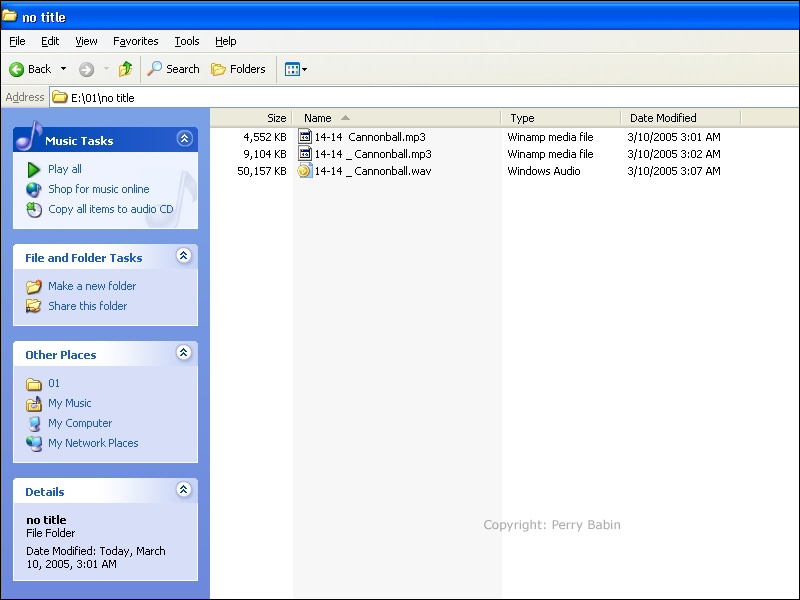
When you get to the 'file types' tab, you will see the list of extensions on the left of the window. Scroll down until you find the extension you're looking for. In this case we're looking for the 'wav' extension. Click on the extension to highlight it. You can see that it 'opens with' Nero Showtime. Since we want to change that, click CHANGE.
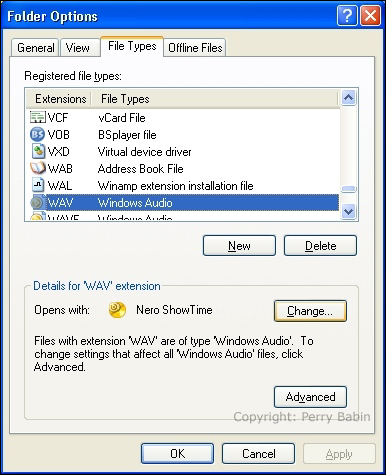
When you click CHANGE, a dialog box will come up with a list of programs. The programs (also known as applications) at the top (recommended programs) are the most likely to work with the file type for which you're changing the association. The programs below in the 'other programs' may or may not work. Since the program we want to use is in the list, we simply click it and then click OK. Close any other open dialog boxes clicking OK in each case. Clicking cancel may prevent the changes from taking effect.
If you don't remember from earlier, to get to the dialog box that allows us to change file associations, you go to MY COMPUTER >> TOOLS >> FOLDER OPTIONS >> then click on the FILE TYPES tab.
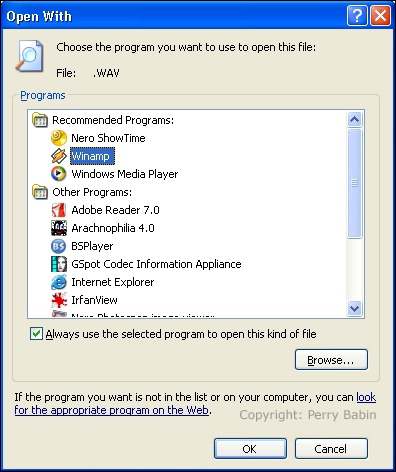
When you're finished, you will see that the file association in the 'Windows Explorer' window shows that the wav files are associated with Winamp.
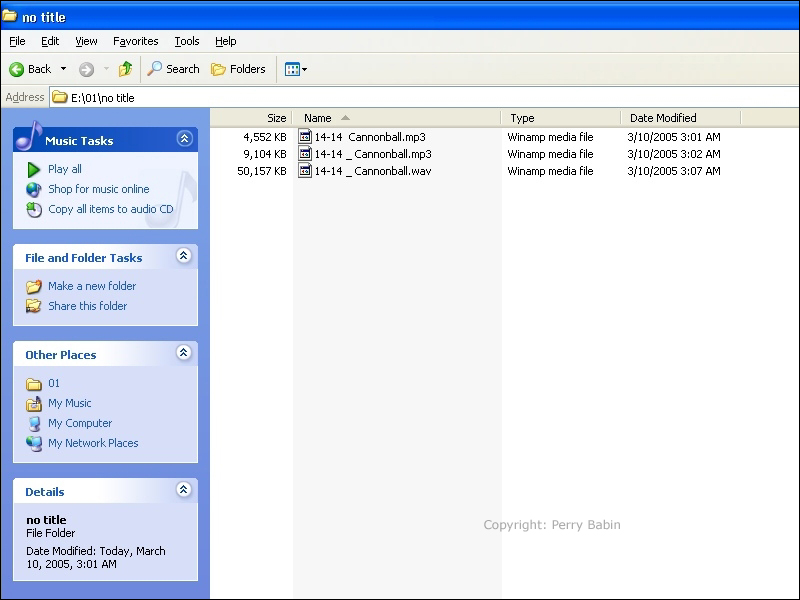
What if the Program isn't in the List?
If the file isn't in the list and you need to manually find it, you can do so relatively easily. When you get to the window that lists the most likely usable programs, you select BROWSE. Windows will automatically open to the 'program files' page. There you will see a list of folders. Find the folder you need (named winamp in this case). To enter the Winamp folder either double-click it or click once and press the 'open' button.
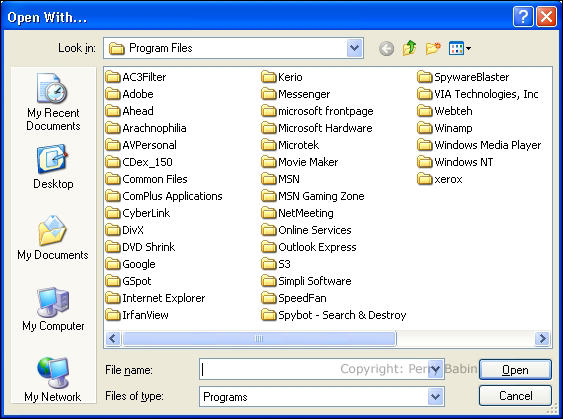
When inside of the Winamp folder, you will see a couple of executable files. Select the Winamp.exe. Click Ok on all of the open dialog boxes.
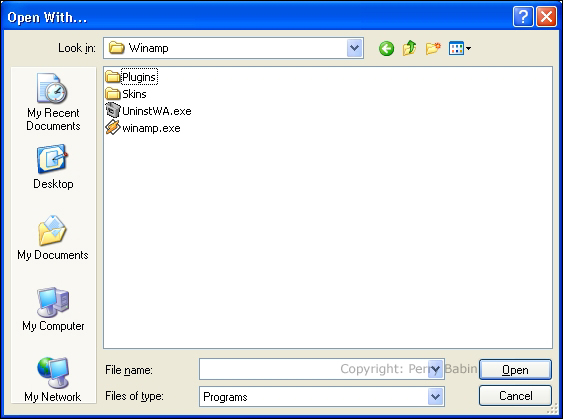
Note:
Winamp is only suitable for audio/video files - for other file types, you'd select the appropriate program.
Changing the File Association the Easy Way
The previous example for changing the file association was the more difficult way. I took you through it because you need to learn how to navigate through Windows. There is a somewhat easier way. If you have a Windows Explorer page open and you see the file for which you need to change the file association, you can... Right-click on the file >> select PROPERTIES >> select CHANGE and then procede as you did in the previous example.
Note:
In previous Windows versions the file manager application (for which 'my computer' is 'a' starting point), 'Windows Explorer' was on the START menu. They've moved it to START >> ALL PROGRAMS >> ACCESSORIES >> WINDOWS EXPLORER. If I use the name 'Windows Explorer', don't let it confuse you.
|
If you have any suggestions for this page or for the computer pages in general, please Email me.
|
NOTE
If you found this page with a search engine and there is no directory to the right of this page, click HERE to properly load the page. It should look like the following image.

|







